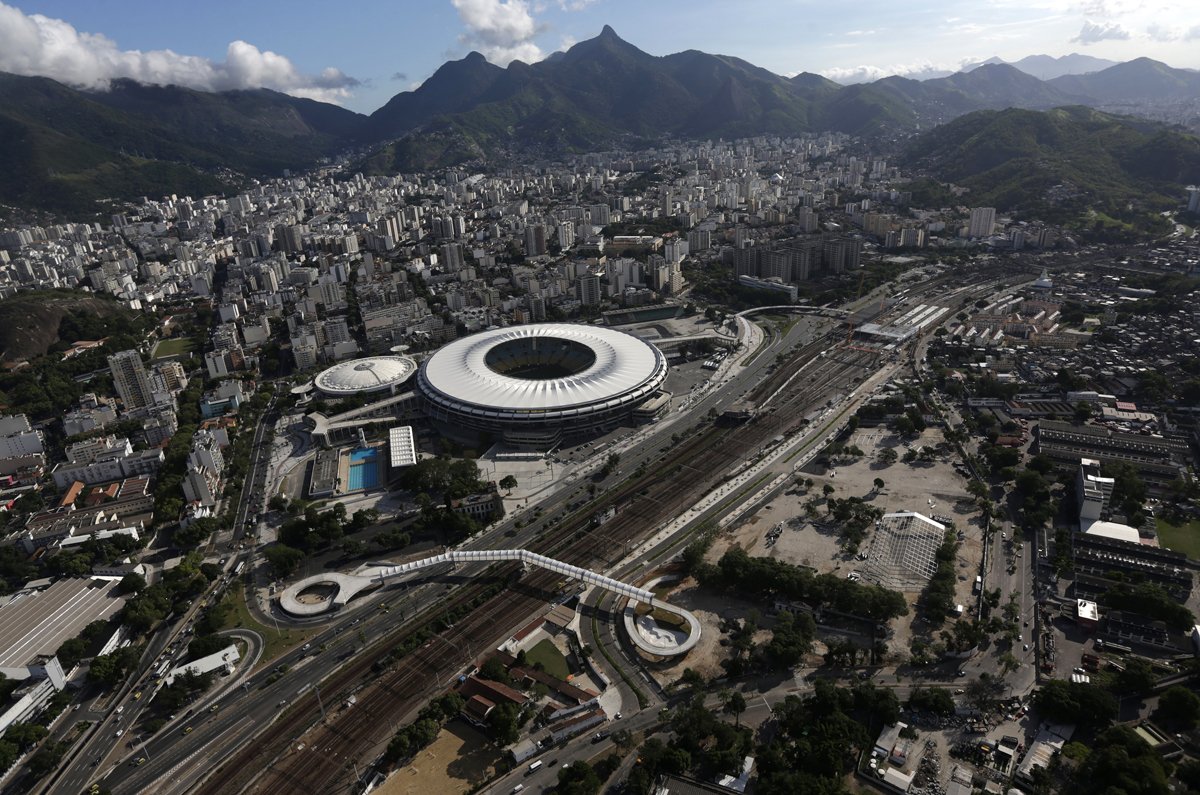The construction and renovation of 12 soccer stadiums for the 2014 World Cup in Brazil was plagued by cost overruns, legacy concerns, and missed construction deadlines.
There are also questions about the point of spending $3.6 billion on stadiums, some of which don't seem to have long-term uses, when other basic social services are underfunded.
These photos of the 12 host venues reflect the complexity of the Brazil World Cup. The venues are striking and surrounded by natural beauty; but they're also sometimes way behind schedule, sometimes tucked between slums, and sometimes needlessly expensive.
Our favorites: the Estadio das Dunas in Natal and the Arena Pantanal in Cuiaba.
Our least favorites: the depressing Arena Pernabumco in Recife.

The historic stadium once held nearly 200,000 people. After a $536-million renovation, the capacity is now 78,000.

The Maracana is in the thick of Rio, right down the road from the Mangueira slum.

It looks spectacular at night.

The most striking arena from above: the brand-new Arena das Dunas in Natal.

It's the smallest of the World Cup arenas with 42,000 seats. But it still cost $400 million to build.

The stadium slopes downward toward both ends. It's supposed to look like a sand dune.

On the other end of the spectrum, the newly built Arena Pernambuco in Recife is the ugliest arena

Oof.

The most controversial arena is probably the Arena Amazonia in Manaus

Manaus is in the middle of the jungle and doesn't have a top-flight club team. It doesn't need a 45,000-seat arena

Parts of the stadium had to be transported up the Amazon by boat.

It's gorgeous, but its fate after the World Cup is unclear.

A bunch of other arenas have been finished for months, like the renovated Estadio Nacional in Brasilia ...

The Estadio National was finished last summer and hosted some Confederation Cup games.

The Estadio Castelao in Fortaleza has a stunning backdrop.

The renovated Estadio Mineirao in Belo Horizonte has been there since 1965.

The roof is half concrete, half solar panels after some pricey upgrades

The Arena Fonte Nova sits on the shores of the Dique do Tororo lake in Salvador

It had to be repaired last year after a portion of the roof caved in.

The arena is owned by the state of Bahia, and should have a long legacy after signing a $100 million sponsorship deal with Itaipava

The Itaquerao in Sao Paulo is the most worrisome arena.

A huge portion of temporary bleachers wasn't approved for the arena's final test event in early June.

Organizers say it will be ready to go for the opening game on June 12, but it's coming down to the wire.

More construction work is ahead. The capacity will be reduced to 45,000 after the World Cup.

Another stadium that came down to the wire was the Arena de Baixada in Curitiba

It was finished less than a month ago.

The rectangular glass roof looks fantastic from below

The Arena Pantanal in Cuiaba is now finished after multiple construction delays

The interior is sleek.

The last of the 12 arenas, the Beira Rio in Porto Alegre, is another historic site

After a $130-million renovation, it has a bunch of modern touches, like a roof that collects rainwater
Source: www.businessinsider.com

